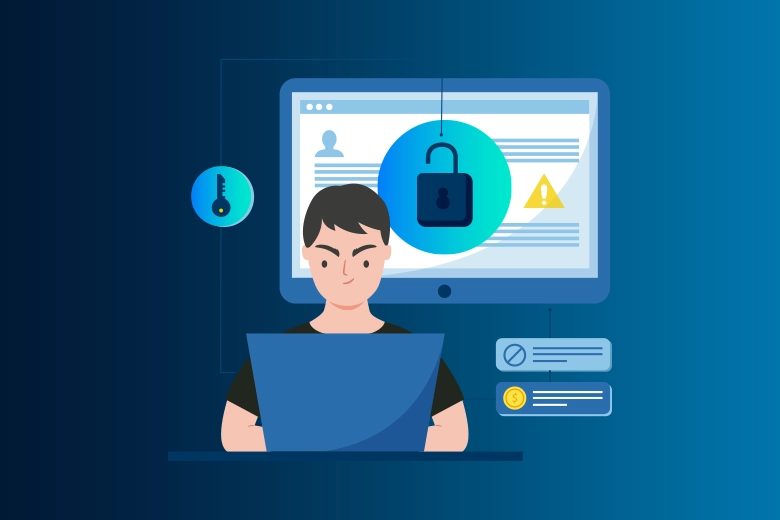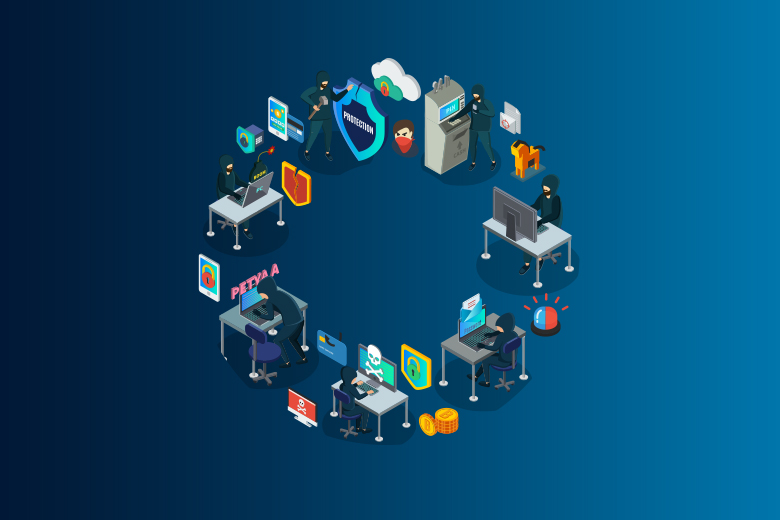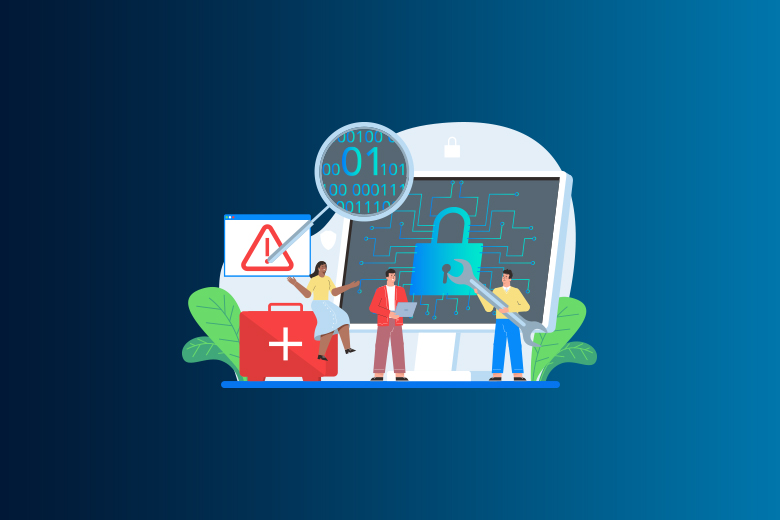21 February 2024
SafeAeon Inc.Phishing attacks are smarter and more common than ever. In 2023, a shocking 82% of businesses said they had been targeted by phishing efforts, which cost them more than $4.2 billion. These attacks take advantage of mistakes people make by getting workers to click on malicious links or give up private data. The bad things that happen are data breaches, financial losses, problems with operations, and damage to the company's image.
Phishing scams today are very clever, so old-fashioned security measures often don't work. That's why you need a good incident reaction plan. It's the first line of defense for your business and gives you a clear, systematic approach for finding, stopping, eradicating, and recovering from phishing attacks quickly and easily. Implementing incident response strategy can help you limit damage, keep important info safe, and keep your business running.
Don't wait for more fake emails to come in. This guide will teach you and give you the tools you need to make a strong incident reaction plan that will protect your company from the constantly changing threat of phishing attacks.
Things to consider for incident response plan for a phishing attack
Attacks like phishing are more common and sophisticated than ever in the digital world today, so it's not a choice to have a strong crisis response plan. What, though, does a good plan include? Here's a more in-depth look at some important things to think about in the digital age:
1. Customized Evaluation: Don't use a method that works for everyone. First, you should look at your company's specific vulnerabilities and ways of attacking it. Think about trends in the business, past events, and the types of people who work for you. Are you likely to fall for spear phishing? BEC stands for "business email compromise." Smishing an attack? Make changes to your plan as needed.
2. Beyond IT: Building a diverse team is more than just IT. IT and security are very important but don't separate the reaction. For complete decision-making, include professionals from legal, HR, and marketing. You might want to involve public relations to communicate with the outside world during big events.
3. Go Beyond Email: Make Your Reach Bigger: Don't forget that hacking isn't just email. Social engineering on social media platforms, telephony-based phishing (vishing), and SMS-based phishing (smishing). Teach your workers how to spot fishy behavior on all platforms.
4. Preventative Containment: Explain what preventative steps are. Include blocking any questionable links, putting hacked accounts in a safe place, and separating affected devices. You might want to use automated containment methods that are based on certain red flags.
5. Integration of Threat Intelligence: Use threat intelligence feeds to stay up to date on attack vectors and vulnerabilities. Adding these feeds to your response routines will help you find and contain problems faster.
6. Forensic Analysis: For comprehensive event analysis, you should spend money on advanced forensic tools and skills. This helps find the source of the attack, its scale, and any possible data breaches. For tough cases, you might want to hire digital forensics experts.
7. Reporting a Data leak: Know what the law says you have to do to report a data leak. Learn about the notification rules and due dates for various data types and regions. Set up clear rules for communication so that reports are made on time and clearly.
8. Educating and teaching employees: Regular training on phishing detection phishing regularly is very important. To keep your workers alert, use real-life examples, phishing simulations, and short learning modules. Test what they know and change their training based on how well they do.
9. Exercises and simulations that you can do at home: Don't wait for a real attack to test your plan. Do tabletop exercises and simulations daily to find problems, improve communication, and see how well the team works together. Include a range of situations and change the tasks based on what you've learned.
10. Metrics and Continuous Improvement: Keep an eye on important metrics like data loss incident response times and how well containment works. Look at these measures to find places where you can improve, and make sure that your plan changes as the threats do. Review your plan often and make changes as needed.
Bonus Things to Think About:
Multi-Factor Authentication (MFA): Use MFA at all entry points to add an extra layer of security and make it much less likely that your credentials will be stolen.
Security Information and Event Management (SIEM): Buy an SIEM solution to gather and analyze security data from different sources. This will allow you to watch in real-time and find incidents more quickly.
Incident Response Automation: Look for ways to automate certain parts of your response plan, like locking down users' accounts or isolating a system, to speed up the first steps and and mitigate human error.
Including these parts will help you create a complete and flexible phishing incident reaction plan that protects your business from new threats. Remember that being ready is the best way to limit damage and keep your business running when advanced phishing attacks happen.
A step-by-step guide to make an emergency incident response plan for phishing attack
Now that we've talked about the importance and the basics, it's time to talk about the method. There are many steps that need to be taken to make a strong emergency phishing reaction plan. To set up a proactive defense against phishing threats, follow this thorough plan:
Check out the current security frameworks.
First, look at the security steps you already have in place. Look over your current procedures, technology setups, and event management skills to find their strengths and weaknesses. Find any weak spots that could be used by threat actors to get your information.
Make a response team with people from different fields.
A specialized team with members from IT, security, legal, human resources, and marketing should be put together right away. Assign clear roles and tasks so that everyone can work together smoothly during phishing emergencies.
Make a list of possible phishing threats.
Examine historical incidents and current trends within your industry to recognize prevalent phishing schemes that could target your organization. To be ready for a wide range of risks, you should be aware of different attack methods, such as email phishing, spear phishing, and social engineering.
Plan out Incident Response Protocols
Draft detailed internal reporting guidelines for phishing attempts. Establish a clear escalation procedure and designate communication lines to the IT or security department for immediate action.
Develop Rapid Response and Containment Strategies
Designate immediate measures for when a phishing attempt is detected, such as severing connections to implicated systems and securing compromised accounts. Document procedures to curb the spread of the attack and block further unauthorized entries.
Set Up Investigation and Analysis Procedures
Implement a structured approach for probing phishing incidents. This includes securing evidence, scrutinizing email headers for origin clues, and gauging the breadth of the breach. Formulate a plan to assess the impact on critical data and infrastructure.
Establish Incident Communication Plans
Create protocols for both internal and external communications during a phishing crisis. Draft preliminary templates for notifications, updates, and directives for employees and concerned parties.
Promote Employee Training and Awareness
An essential component involves rolling out continuous training and awareness initiatives to educate staff about phishing risks, recognition, and reporting mechanisms. Reinforce email security best practices and the critical role of vigilance among employees.
Implement Continuous Improvement Practices
Ensure your emergency plan remains effective through regular audits and simulations. Gather insights from response activities to refine your strategy, addressing any vulnerabilities or adapting to new phishing tactics.
Maintain Documentation and Regular Updates
Maintain comprehensive records of your phishing response strategy, including step-by-step procedures, contact lists, and response checklists. Periodically reassess and update the plan to accommodate technological advancements, changing attack patterns, or shifts in organizational structure.
By adhering to these structured steps, organizations can establish a comprehensive emergency phishing response plan, equipped to manage and mitigate phishing incidents efficiently, safeguarding vital assets and sensitive information.
Conclusion
Staying ahead of phishing threats demands being alert continuous awareness and proactive measures. As important as an incident reaction plan is, keep in mind that it's only one part of the puzzle. Invest in ongoing employee training your employees on how to spot hacking and avoid falling for it. Test and change your plan often to keep up with new strategies and weaknesses. For extra safety, you might want to use advanced security tools like email filtering and multi-factor login. Remember that communication is very important. Sharing threat information and lessons learned with your team on a regular basis will help create a mindset of security awareness. By taking a broad view, you can not only effectively defend against phishing attacks, but you can also stop them before they happen. With SafeAeon, you can seek best solutions for protecting your company's data, image, and future.














